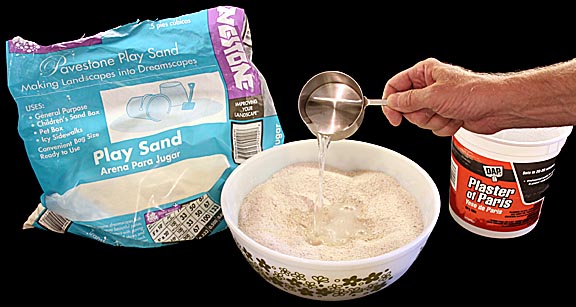

DINOSAUR HUNT! How to make a homemade dinosaur fossil hunt children will love.
While
looking through a teaching supply store I found what was labeled as
a fossil hunt activity for children. It consisted of a block of
plaster of Paris, a wood digging tool and a soft brush. The
advertisement stated that there were two fossils buried in the block
that children could dig out and in so doing experience the thrill of
an actual fossil hunt. I got it and the advertisement was right, the
second my grandchildren saw it they went crazy digging away for all
they were worth. That's where things started going terribly wrong.
First, the plaster of Paris block was so hard that the wood tool couldn't make the slightest dent in it. I gave them small screw drivers to use, and while these managed to scratch the surface the plaster was still almost impossible for them to carve. Worse still, the sharp metal tools needed to dig in the block were dangerous. More than once they slipped and almost stabbed themselves. Finally, after an hour's effort they reached one of the fossils: an unidentifiable round lump. Needless to say they were dejected.
As poorly designed as this toy was it nonetheless sparked intense interest in the children, whose ages range from three to eight. This suggests the idea is a good one. but flawed in execution. A little brainstorming with my wife and a few experiments led to the following homemade version of the failed fossil hunt. We've tried it half a dozen times on our grandchildren and it never fails to get them excited and happy.
The first problem to solve was the material through which the children have to dig to reach the fossil. It has to be strong enough to hold together yet soft enough so that even very young children can dig though it. It also has to be able to be worked with rounded tools that if they slip, can't injure a child's hands. Several experiments varying the amount of water, sand and plaster of Paris resulted in the following formula:
8
cups of ordinary play sand
1/2
cup of plaster of Paris
3/4
cup water.
Mix the sand and plaster of Paris in a large bowl. Make sure the plaster is evenly mixed throughout the sand. Then add the water

and thoroughly mix it in. It'll seem like there isn't enough water but there is. The sand will feel barely damp. If squeezed in a hand it'll make a clod that holds together.
Place a couple of handfuls on a large sheet of aluminum foil and press down the object to be buried, in the following case a small plastic triceratops:
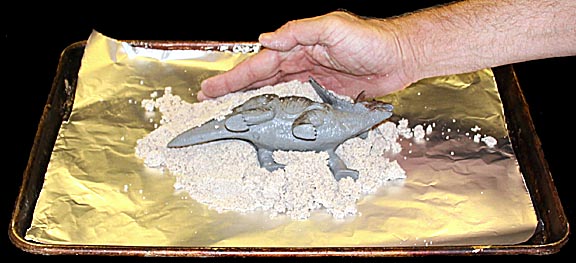
Add more of the sand mixture, pushing it in from the sides to fill in all the nooks and crannies around the dinosaur. Continue packing on the sand mixture until the fossil is completely enclosed.
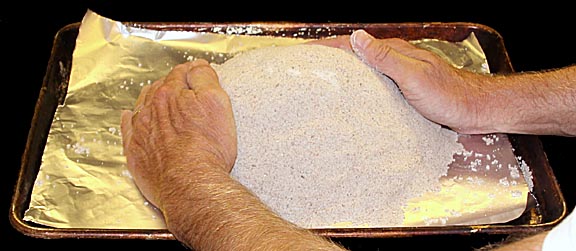
The plaster will set in an hour. After that you can turn your children loose on it.
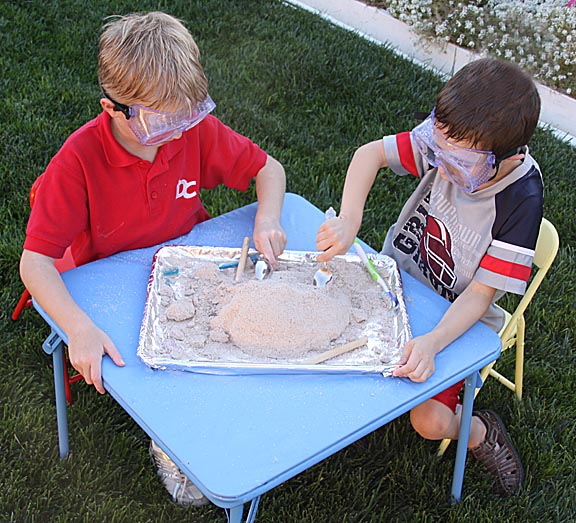
I tried having them use several different types of safe homemade wood tools but in the end plain old spoons worked the best. Very young children may have better luck with baby spoons. A couple of old tooth brushes are useful to have on hand for delicate work. An important word of warning: Always have children wear eye protection. As they brush and dig, sand inevitably flies and if any of it got into their eyes it could cause serious problems.
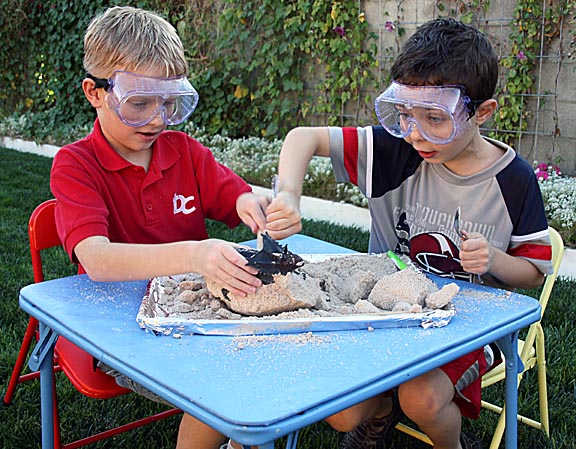
You won't believe the excitement on their faces as they uncover the first foot or tip of a tail. Their digging builds to a frantic pace as they hurry to uncover their treasure. Don't be surprised if they then get into a debate about what they found, reeling off ten-syllable Latin names by the dozens as they debate the importance of horns, frill size and neck length.
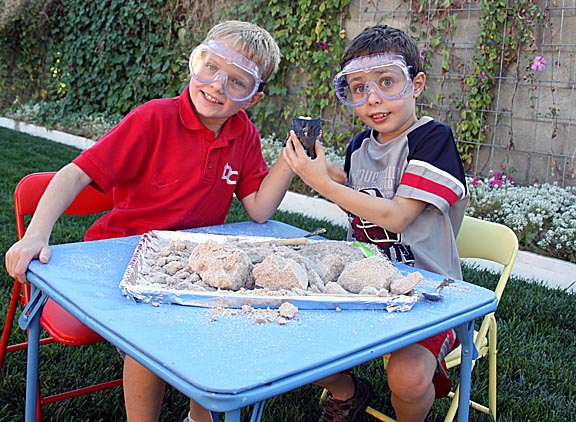
No matter who wins they'll all have a great time. They don't seem to mind that they end up with a plastic dinosaur instead of a bone. But, feel free to use whatever objects you prefer, as long as they are clean and safe.
Clean-up is a snap. The sand can be thrown into the garden with no ill effects. Large clods easily crumble into loose sand and if the activity is done inside, any sand that gets on the floor is easily vacuumed up.
(Click
here to browse 70 topics on my main
site ranging from triangle looms and Knitting Nancies to magnetic
rocket engines.)